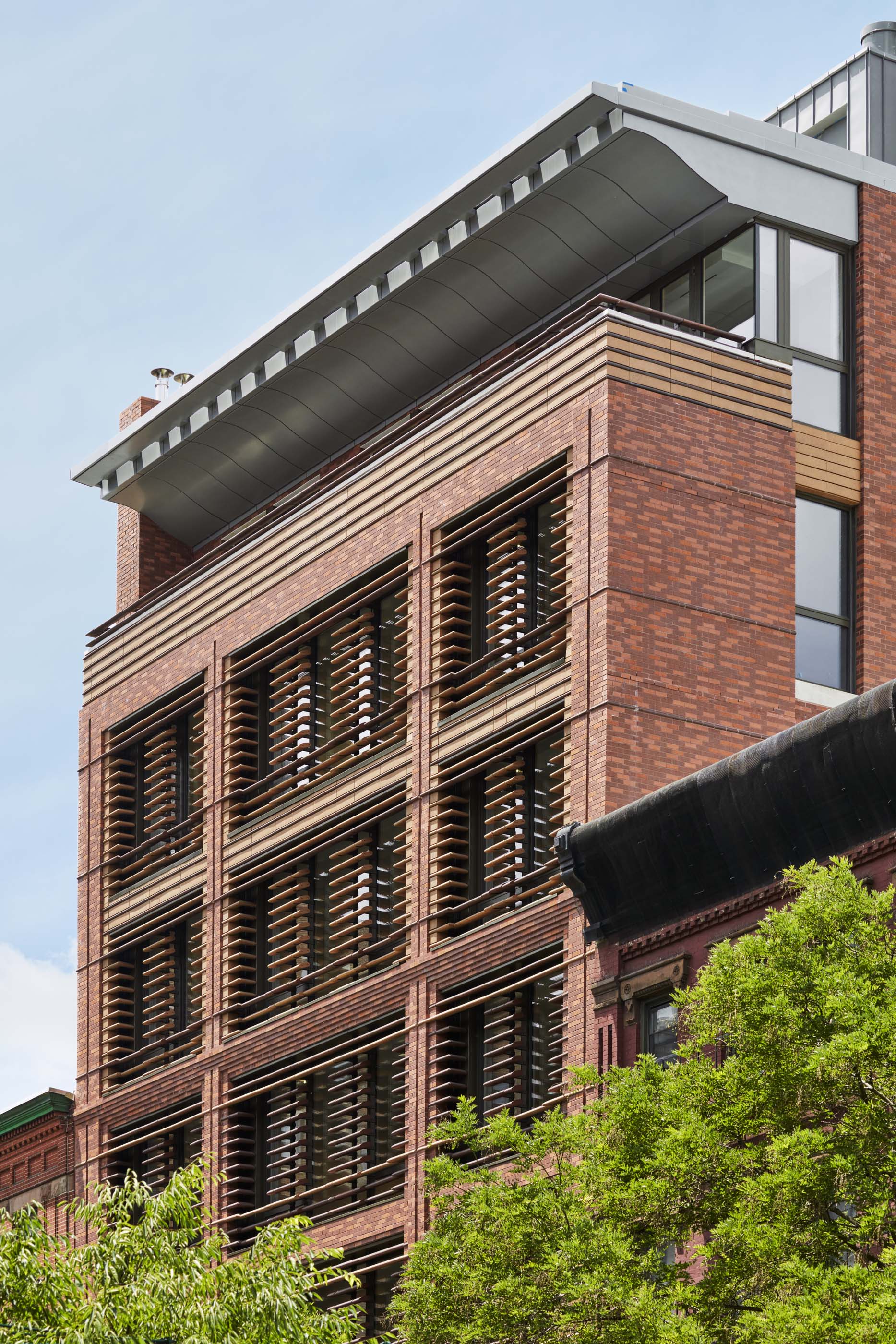- Architect
BKSK Architects - Location
New York, New York - Completion
July 2022 - Developer
Roe Corporation - Construction Manager
Hudson Meridian Construction Group - Interior Design
Alyssa Kapito Interiors & BKSK Architects - Terra-cotta
Ceipo Ceramiche - Brick
Hebron Brick Company - Glazing
Guardian UltraClear Low Iron - Residential windows and glazed doors:
Zola Thermo Clad and Thermo Plus Clad Windows - Glass storefront
Kawneer Clearwall - Metal canopy, structures, panel, and glass railings:
ACID US LLC - Zink Bulkhead Structures:
VMZinc Quartz-Zinc Plus
Charlotte of the Upper West Side pushes the boundaries of environmental performance in New York City. One of a limited number of ground-up construction projects approved in the Upper West Side Central Park West Historic District in recent years, the building, designed by New York–firm BKSK Architects, rises seven stories on Columbus Avenue between 82nd and 83rd Street. With a terra-cotta and brick facade, the building exceeds Passive House Institute standards and brings a high level of performance to a design that is a product of its neighborhood.
The building contains ground floor retail, a duplex penthouse, and amenities for residents, including a fitness center, and private storage units. Each unit, save the penthouse, contains four bedrooms and a separate master bedroom space, with interiors designed by Alyssa Kapito Interiors and BKSK. Kitchens were designed by Henrybuilt with single-slab marble countertops sourced from Danby Quarry in Vermont.

Developer John Roe, who took a hands-on role for a number of design elements of the building, likened the project to a “ferrari,” seeking high levels of technical performance and top-grade products. This includes the building’s ventilation system, each unit is equipped with a Zehnder energy recovery ventilation (ERV). Each ERV has a MERV 13 filter, which BKSK cites as being 30 times more energy efficient than traditional fiberglass filters. A variable refrigerant flow HVAC system filters fresh air into each unit, while bringing stale air out in a loop that uses less-than average energy usage when compared to traditional HVAC systems. Controls installed in each unit allow residents to manually control this exchange of air, and Roe said that he looks forward to residents taking charge over the air in their own interior.




